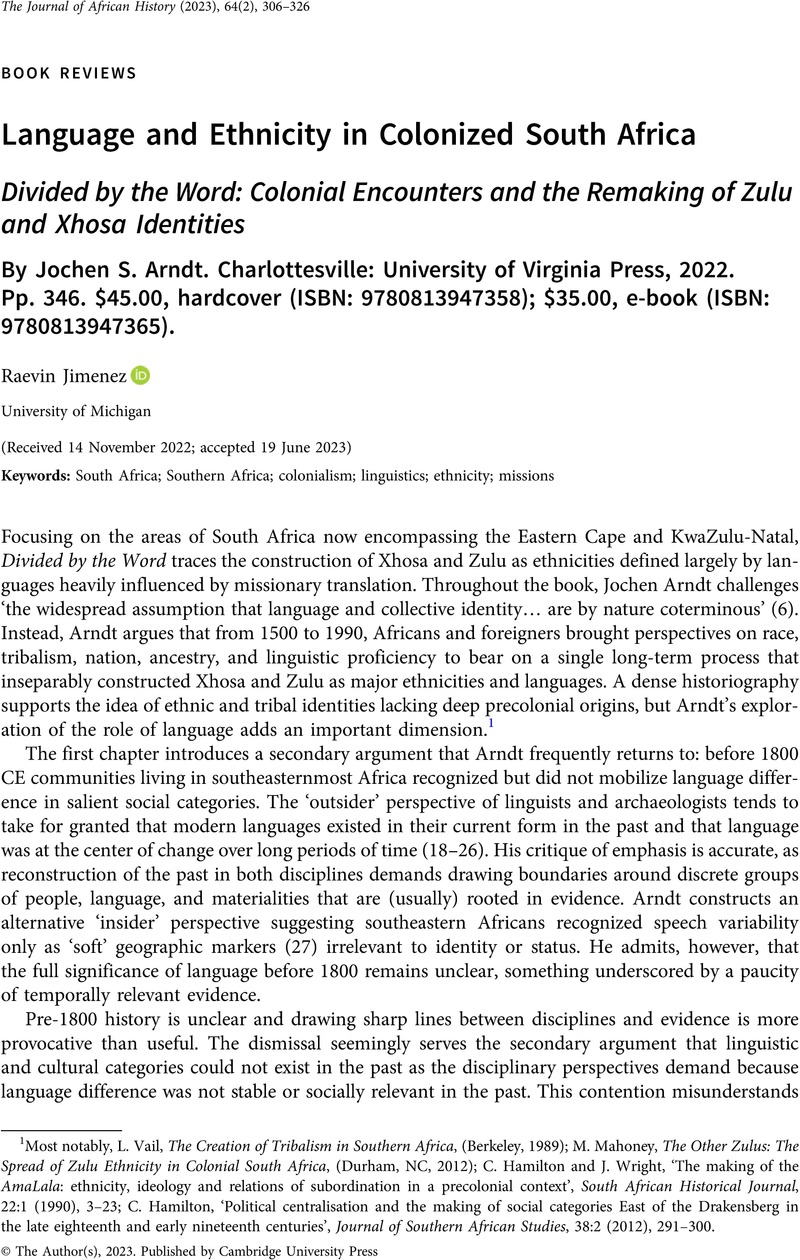No CrossRef data available.
Article contents
Language and Ethnicity in Colonized South Africa - Divided by the Word: Colonial Encounters and the Remaking of Zulu and Xhosa Identities By Jochen S. Arndt. Charlottesville: University of Virginia Press, 2022. Pp. 346. $45.00, hardcover (ISBN: 9780813947358); $35.00, e-book (ISBN: 9780813947365).
Review products
Published online by Cambridge University Press: 28 July 2023
Abstract

- Type
- Book Review
- Information
- Copyright
- Copyright © The Author(s), 2023. Published by Cambridge University Press
References
1 Most notably, Vail, L., The Creation of Tribalism in Southern Africa, (Berkeley, 1989)Google Scholar; Mahoney, M., The Other Zulus: The Spread of Zulu Ethnicity in Colonial South Africa, (Durham, NC, 2012)Google Scholar; Hamilton, C. and Wright, J., ‘The making of the AmaLala: ethnicity, ideology and relations of subordination in a precolonial context’, South African Historical Journal, 22:1 (1990), 3–23CrossRefGoogle Scholar; Hamilton, C., ‘Political centralisation and the making of social categories East of the Drakensberg in the late eighteenth and early nineteenth centuries’, Journal of Southern African Studies, 38:2 (2012), 291–300CrossRefGoogle Scholar.



